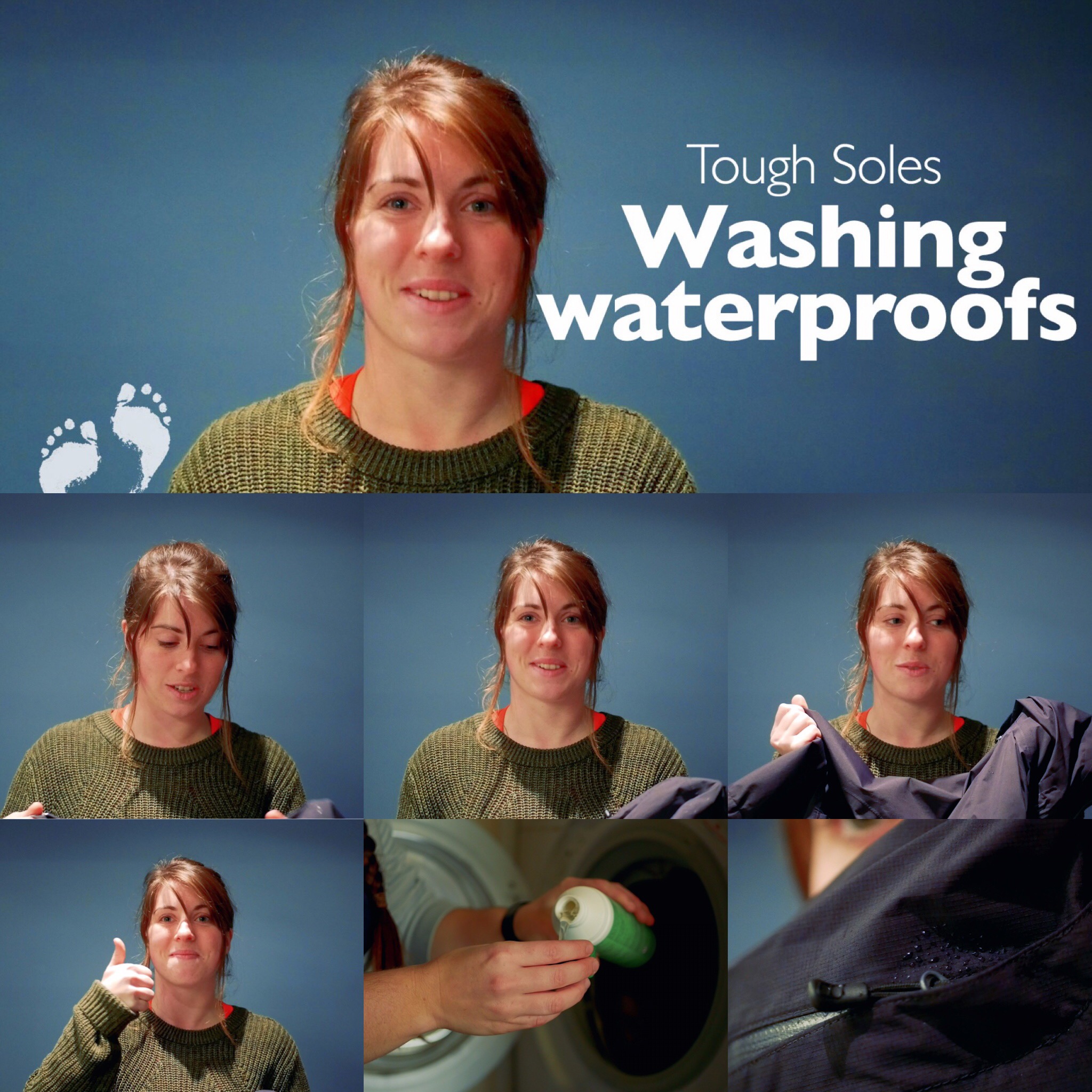You may have noticed that, in many of our videos and write-ups of hiking around the country, there is rain. There are many, many jokes made about how much it rains in Ireland, so it’s not surprising that our rain gear is well used. After so much trudging through the rain, these things can seem to loose their waterproof-ness and the water starts to seep through your layers and into your soul. However, this is not the end! What I’m going to talk about today is how to wash and re-waterproof jackets/rain pants/gore-tex clothing/etc.
There are a few different options when it comes to washing rain gear. Firstly, a couple of “do-nots”:
Don’t use: Biological detergent // fabric softener // bleach // powdered detergents // stain removers.
If you typically use a lot of any of these products in your washing machine, run it through an empty hot wash beforehand to wash away excess products.
If you want to use a standard detergent it’s usually safe to use a liquid, non-bio detergent. However, the tech wash that is made specifically for washing and re-waterproofing rain gear has specific chemicals that improve the water repellency, sweat wicking, and tightens/rebinds the fabric. (Also, most clothing brands have information online about how to wash their products, so it’s always good to have a quick search in case there are some quirks with whatever you own!)
Aside from what brand of tech wash you want to get, there are two options on what to buy, which is typically dictated by what kind of jacket you have. Rain jackets are either shells, or have internal layers. If your jacket is just a shell - no internal insulation or layer - you can easily use a 2 in 1 mixture. This mix has both the cleaning product and the re-waterproofing product in it.
Otherwise, it’s better to you two separate mixes - the tech wash to clean it, and the waterproof spray to spray on it afterwards. The reason you wouldn’t usually use a 2 in 1 mixture for a jacket with insulation/etc. is that the waterproofing chemicals can often leave residue on inside layers. Sometimes it can feel sticky or clumpy. Previously, I’ve used the Grangers 2 in 1 mix on my Berghaus jacket, which has an inner mesh lining. It washed well that one time and didn’t have any residue or tackiness left over. This time I’m using the two bottle approach - Nikwax Tech Wash (green bottle) for washing in the machine, and the (purple bottle) direct spray on for re-waterproofing afterwards. My main choice for using the two separate bottles is for Carl’s jacket: it has a thick inner layer of synthetic insulation. His jacket is pretty worn out, and has never been re-treated, so I’m not sure if washing it is going to be able to restore much of it’s waterproofness, but it’s certainly worth trying!
Whatever cleaner you get, it will have basic washing instructions on the side, and how much liquid to use. Below are some simple, generic instructions for the washing process:
Washing:
Before putting your clothing in the machine, zip up the front, pockets (pits zips, etc.) completely, and fasten all flaps and straps. Brush any dry dirt off.
Machine wash on a low temperature (40°C) delicate cycle, using either your tech wash, or a small amount of non-bio detergent. Rinse well.
If you are using a spray for re-waterproofing, let the garment air dry for a short while (so it’s not dripping wet any more), then spray the outside of the jacket all over (following instructions on the spray bottle). Let the waterproofing mix dry into the fabric, wiping off any spots where there’s obviously excessive spray.
For Drying:
You can either air dry or tumble dry, depending the care label of your item, and your own personal preference.
If using a dryer, set it to a warm, gentle cycle. Once it’s dry, extra heat is needed to reactivate the durable water repellent (DWR) treatment on the outer fabric (You can do this anytime you notice the water repellency needs a boost). Either leave in the tumble dryer for an extra 10-20minutes, or hang on a chair beside a radiator.Some places have said that you can heat your jacket by covering it with a towel and ironing through the towel. I personally haven’t been brave enough to try it!
So for our jackets I let them drip dry for a while, then applied the spray, giving it a few minutes to dry in. I then popped them in the dryer (briefly taking them out after 10 minutes to wipe off any excess chemicals). Once finished in the dryer I hung them on the back of some chairs and let them stand beside the dryer overnight. Because Carl’s jacket has the insulation on the inside I had to turn it inside out for a while to make sure it was fully dried out.
The next day the rain beaded and rain off my jacket perfectly, dripping onto my soggy canvas street shoes. Nearly perfect.
We’ve made our own Tough Soles maps! These maps are free to use, remix, and redistribute under CC-BY 4.0. All you need to do is attribute us! Here are all the maps we’ve made.
If you like our blog you can subscribe to it here!
If you really like it, you can support us on Patreon





